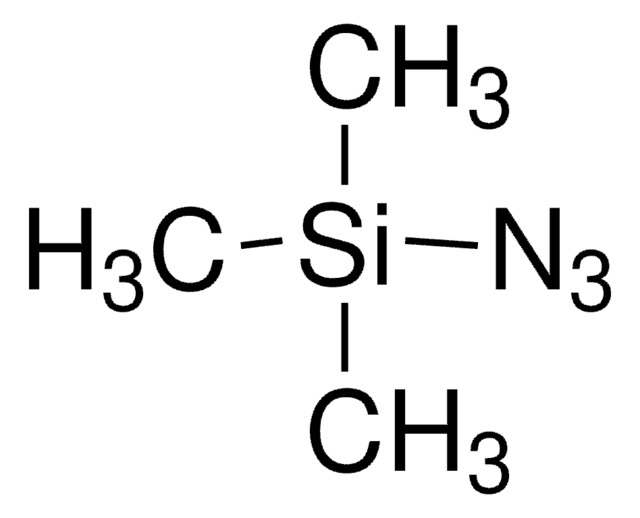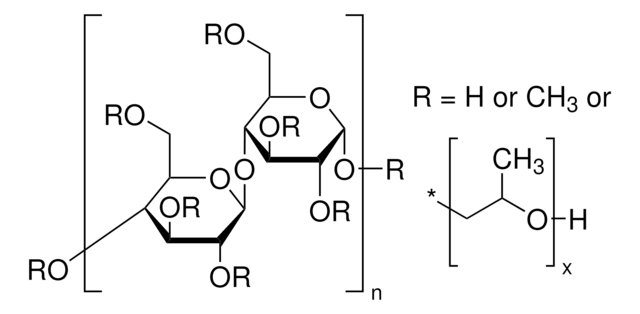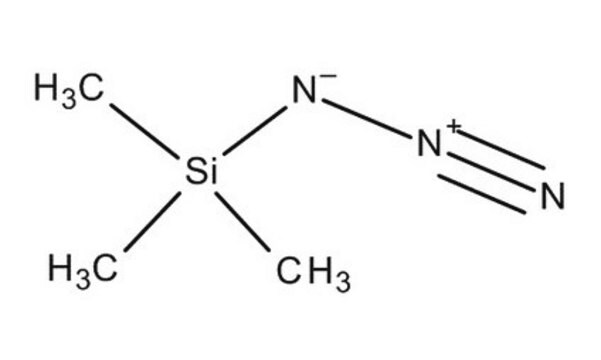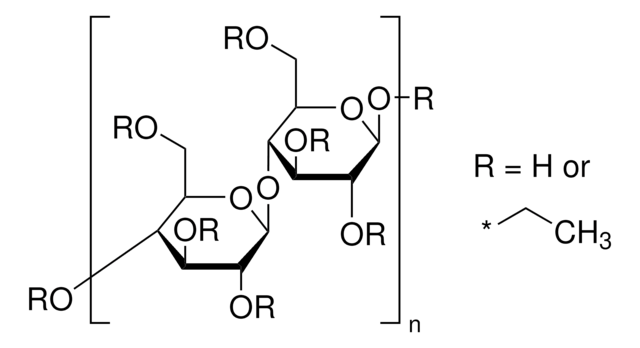191892
Hydroxypropyl cellulose
average Mw ~370,000, powder, 20 mesh particle size (99% through)
Synonym(s):
HPC
About This Item
Recommended Products
description
biological oxygen demand (BOD) 14,000 ppm
Quality Level
form
powder
autoignition temp.
752 °F
mol wt
average Mw ~370,000
impurities
<5 wt. %
particle size
20 mesh (99% through)
pH
5.0-8.5
interfacial tension mineral oil
12.5 dyn/cm, 0.1 wt. % in H2O (vs. mineral oil)
viscosity
150-400 cP, 2 wt. % in H2O(25 °C, Brookfield, spindle #2) (60 rpm)(lit.)
solubility
H2O: insoluble (above 45 °C)
polar organic solvents: soluble
density
0.5 g/mL at 25 °C (lit.)
InChI
1S/C12H20N2/c1-5-12(13)11-7-6-10(14(3)4)8-9(11)2/h6-8,12H,5,13H2,1-4H3
InChI key
RRHXDYJWVYFMKV-UHFFFAOYSA-N
Looking for similar products? Visit Product Comparison Guide
Related Categories
General description
Application
Storage Class Code
11 - Combustible Solids
WGK
WGK 1
Flash Point(F)
Not applicable
Flash Point(C)
Not applicable
Personal Protective Equipment
Regulatory Listings
Regulatory Listings are mainly provided for chemical products. Only limited information can be provided here for non-chemical products. No entry means none of the components are listed. It is the user’s obligation to ensure the safe and legal use of the product.
JAN Code
191892-5G:
191892-BULK:
191892-250G:
191892-VAR:
191892-100G:
Choose from one of the most recent versions:
Already Own This Product?
Find documentation for the products that you have recently purchased in the Document Library.
Customers Also Viewed
Our team of scientists has experience in all areas of research including Life Science, Material Science, Chemical Synthesis, Chromatography, Analytical and many others.
Contact Technical Service






